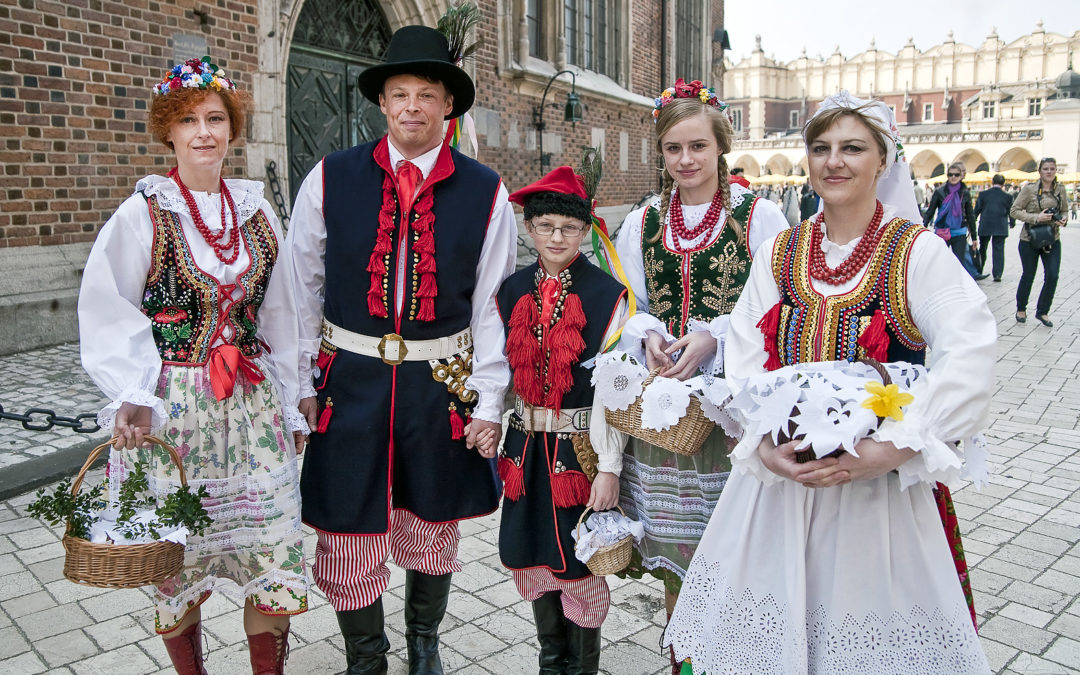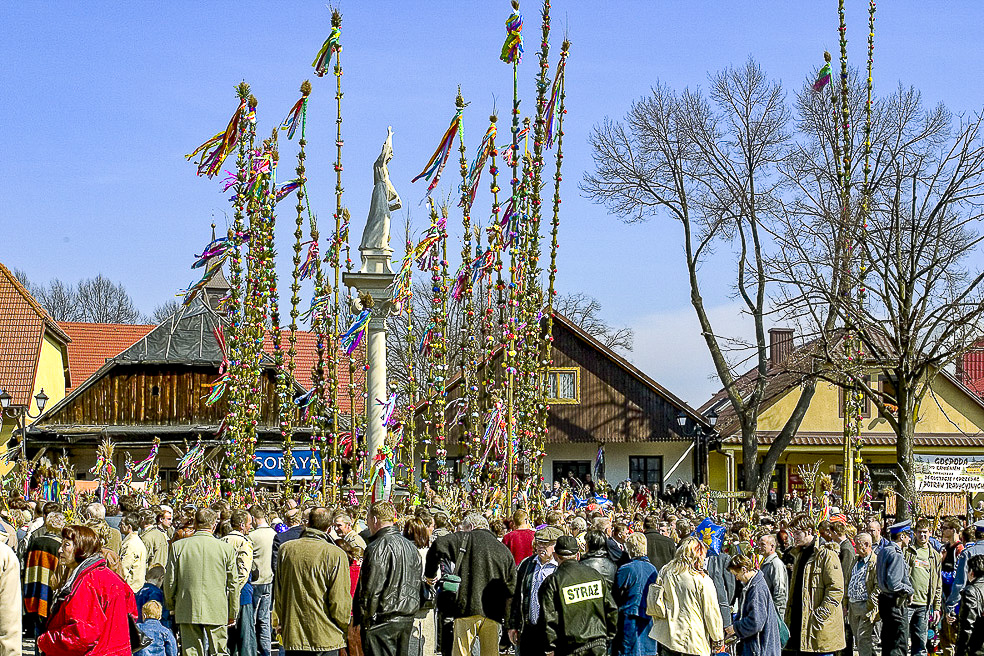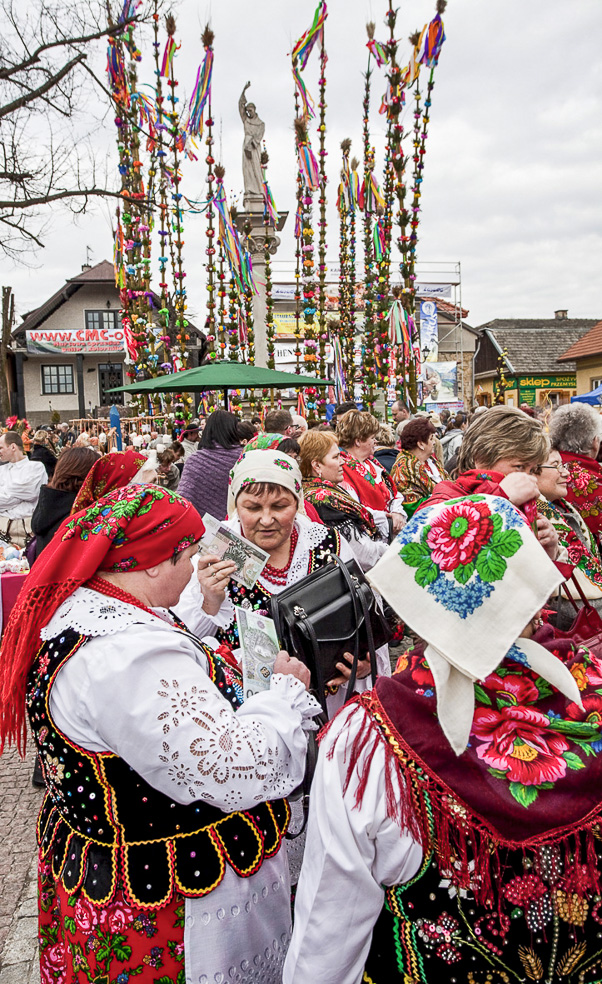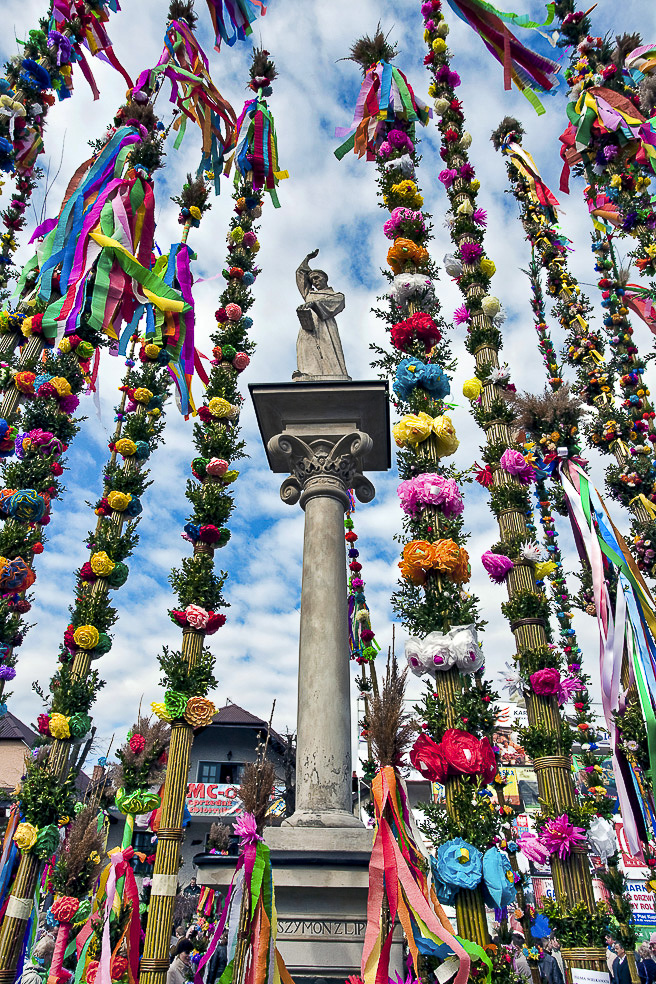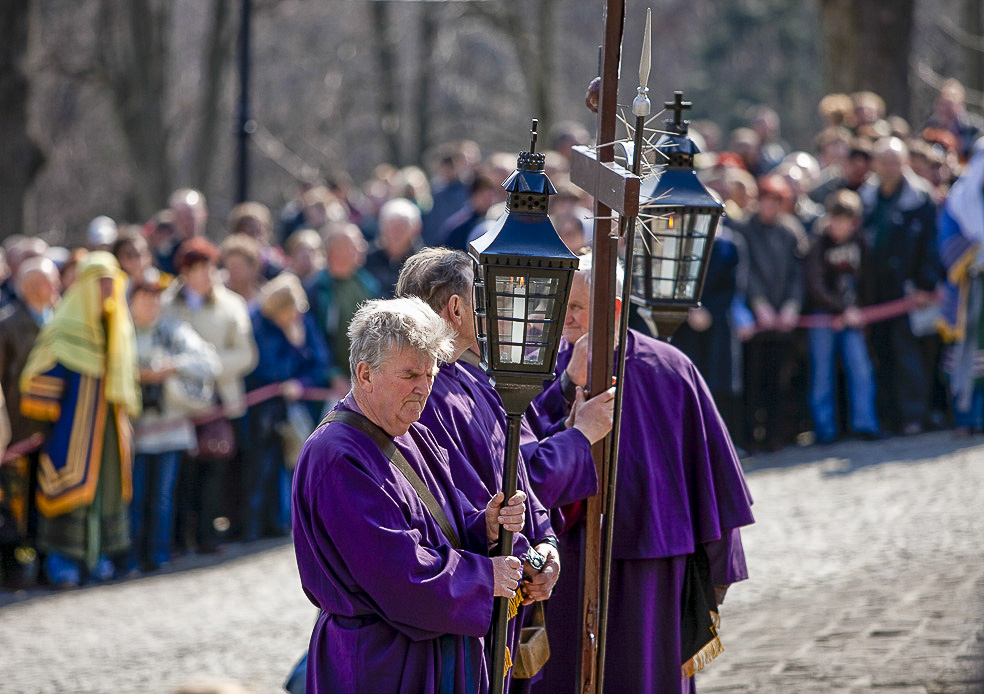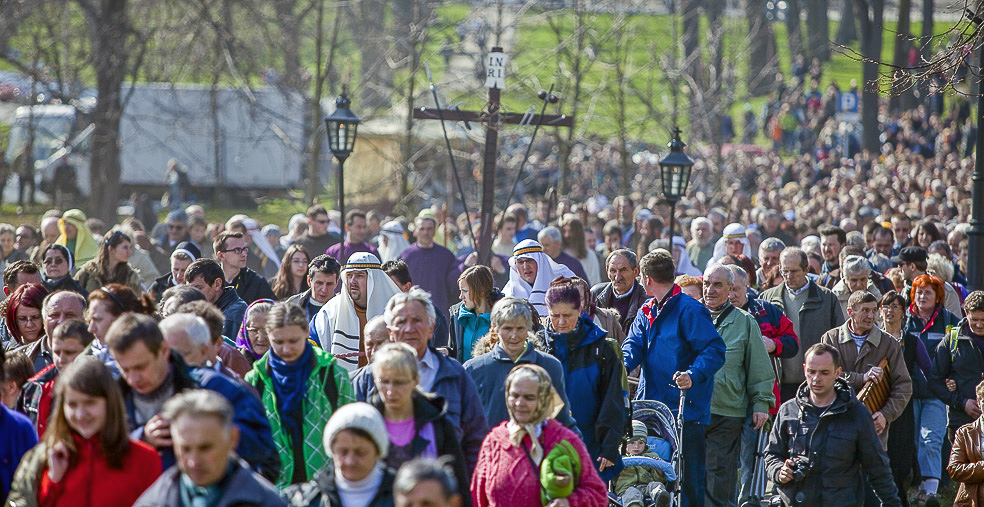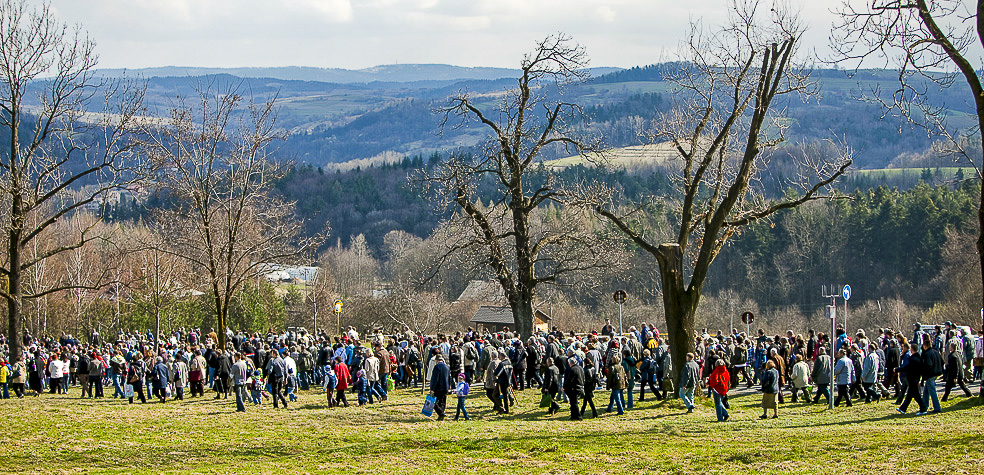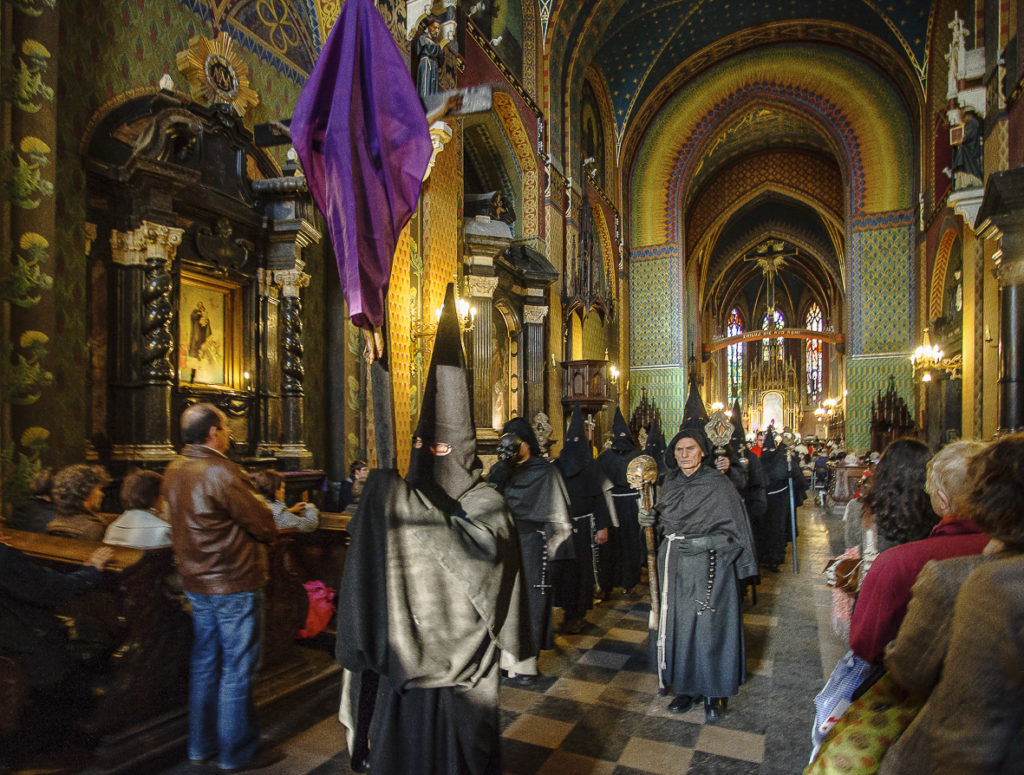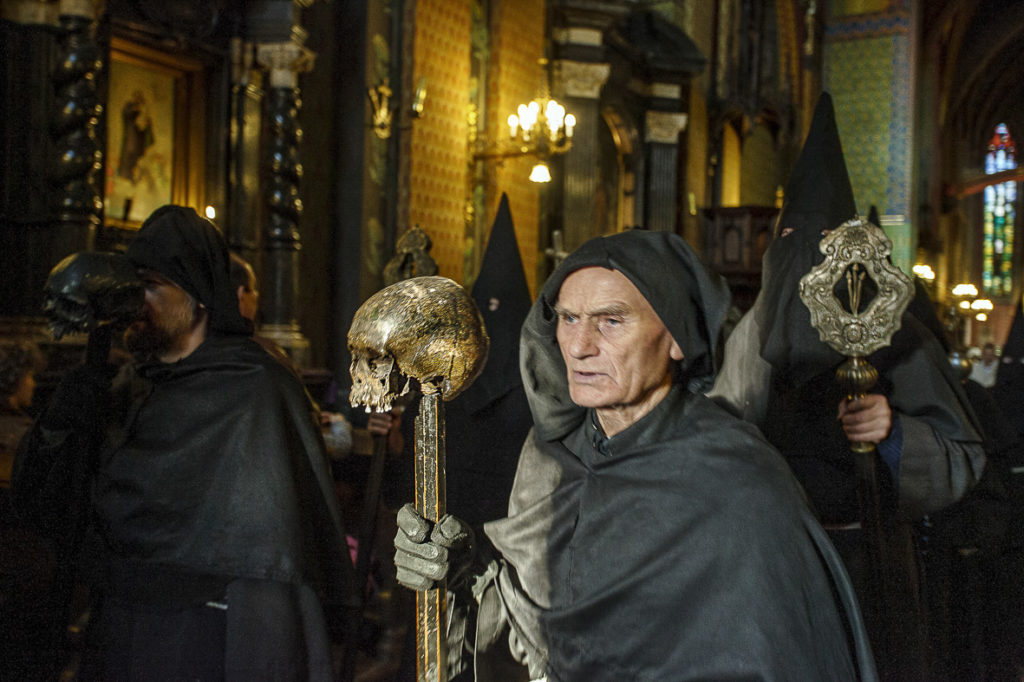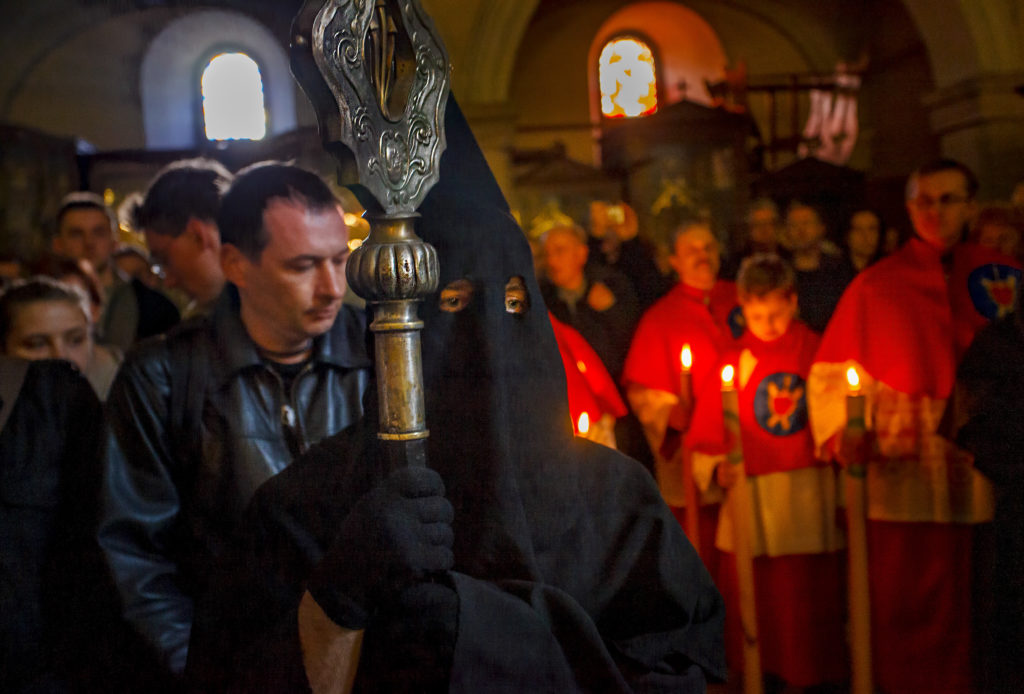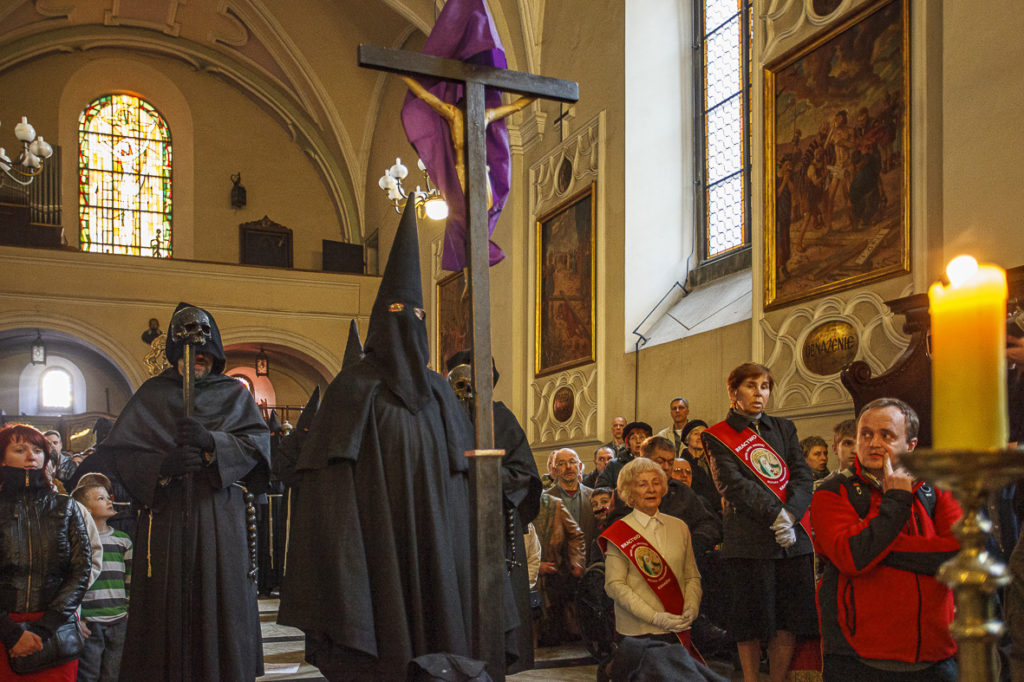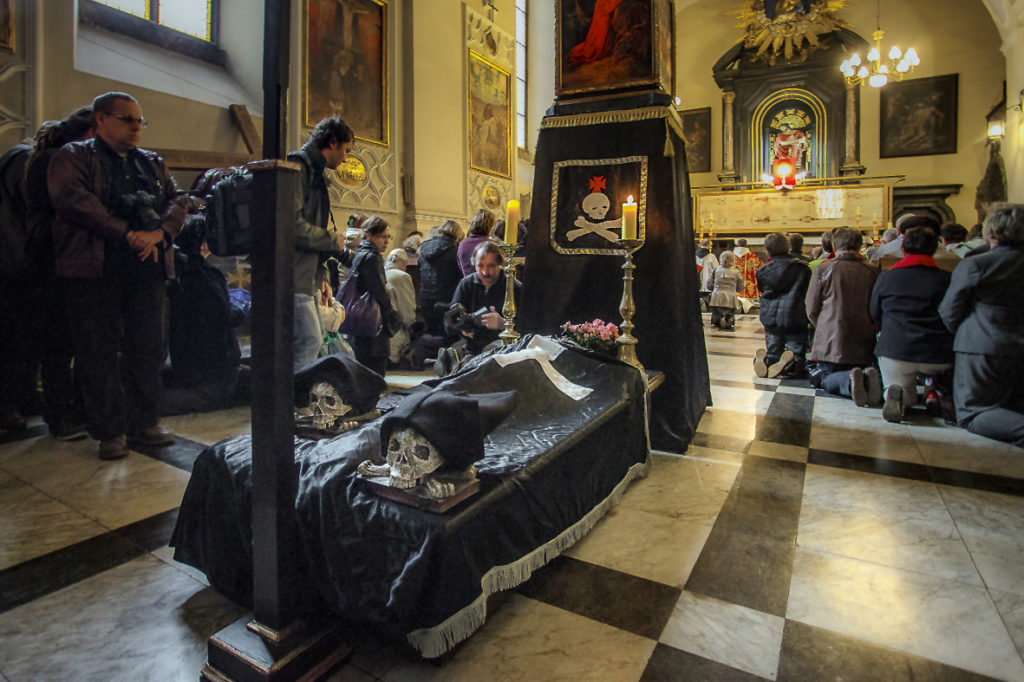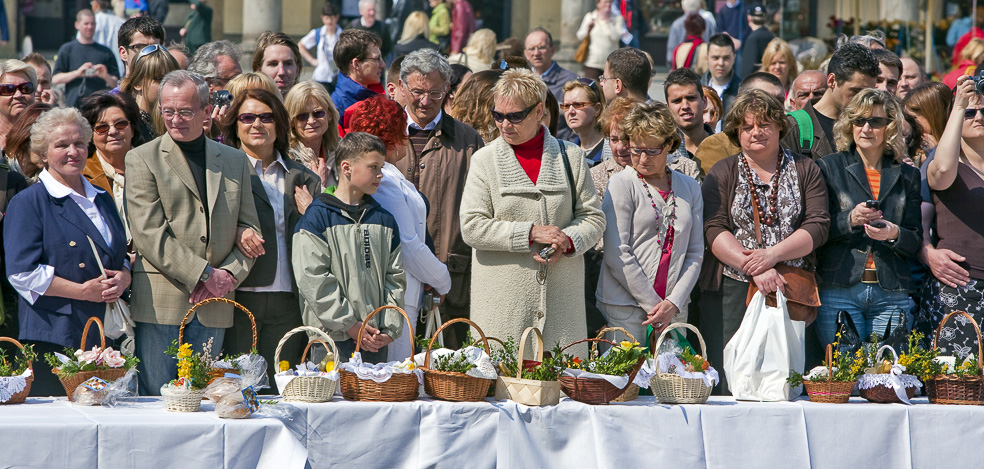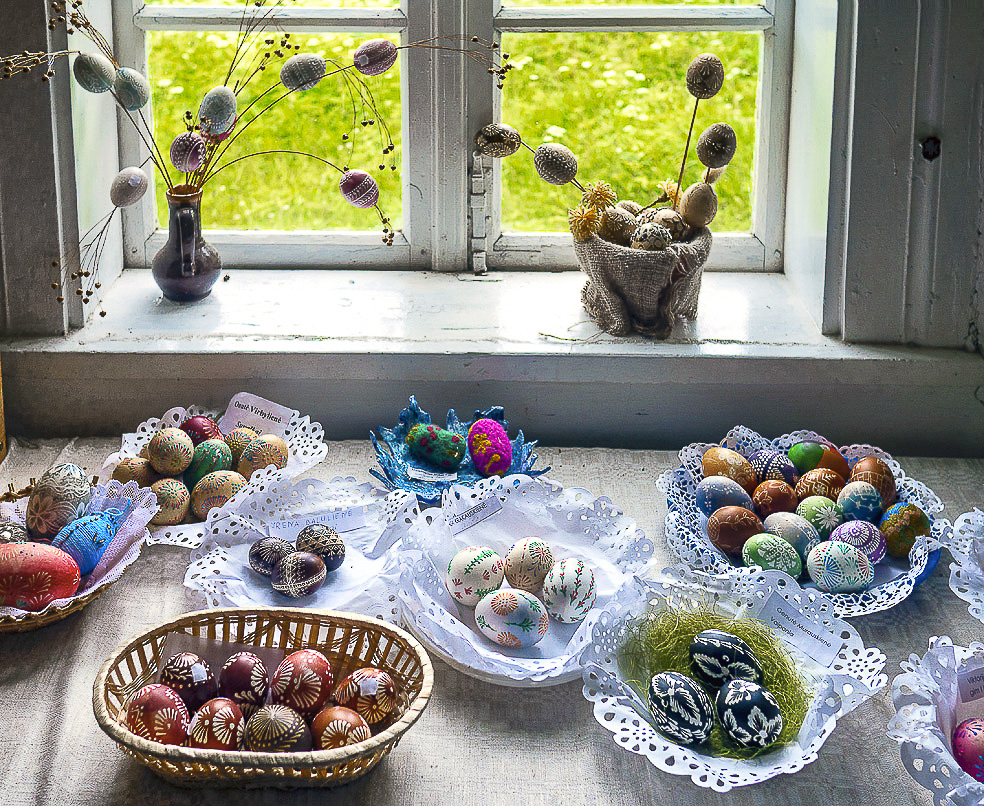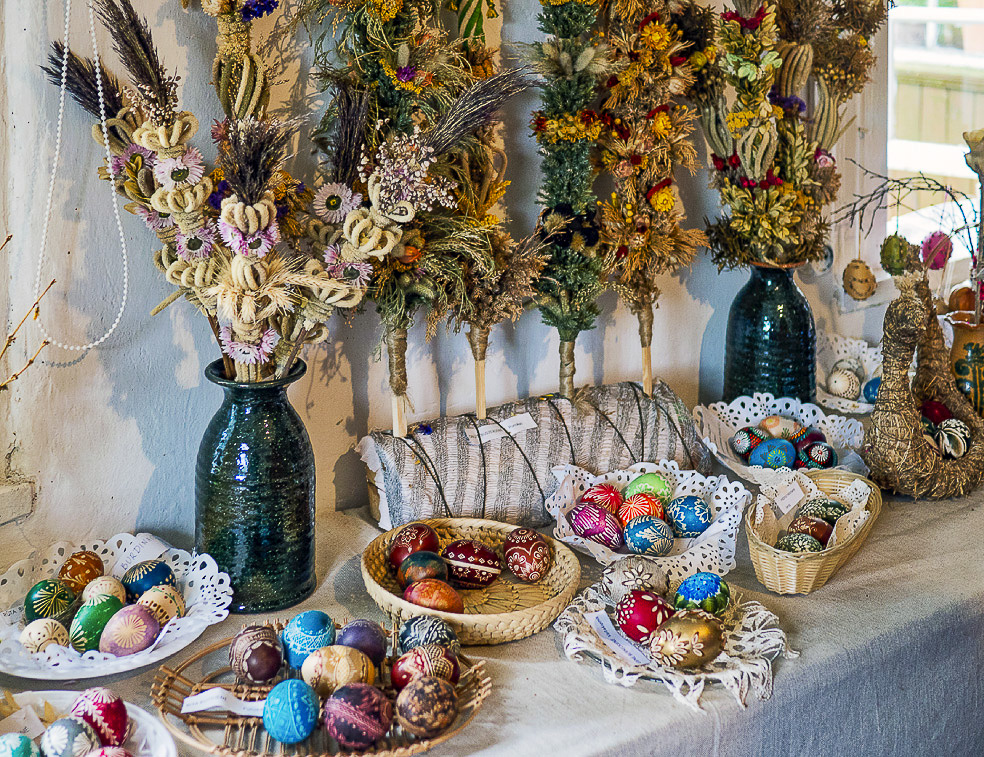Easter in Poland this year will be like no other. As restrictions on public gatherings and travel keep people in their homes, a holiday that for many Poles is the most important of the year will be spent without many of the historic and colourful traditions for which it is known.
At any other Easter time, religious Poles begin Holy Week by carrying branches and dried flowers to church. People up and down the country paint eggs, prepare baskets of food for blessing, come together with their loved ones for the traditional Easter Sunday breakfast, and drench unsuspecting passersby with water and cries of “Śmigus Dyngus” on Easter Monday.
Here is a selection of some of Poland’s Easter traditions – from the giant, bright artificial palms competing in Lipnica Murowana to the black habits and skulls of the Confraternity of the Passion – all captured by the photographer Jerzy Ochoński. To see more of his spectacular images from around Poland, visit his website.
Palm Sunday, Lipnica Murowana
On the Sunday before Easter, churchgoers make elaborate, colourful artificial palms. The village of Lipnica Murowana in southern Poland plays host to one of the country’s famous palm competitions, with the longest specimens exceeding 30 metres. These photographs depict the 2006 competition, adjacent to the column of St Simon of Lipnica on the village square.
Passion Play, Kalwaria Zebrzydowska
As the name suggests, the southern Polish town of Kalwaria Zebrzydowska is a calvary – a complex of churches or chapels symbolising the stations of the Passion of Christ. It is the country’s oldest, dating back to 1600, and in 1999 became a UNESCO World Heritage Site. In Holy Week, the town plays host to a Passion Play attended by thousands of pilgrims – these photos are of the 2010 edition.
Archconfraternity of the Passion, Kraków
The traditional Jerusalem Procession on Good Friday, from the Chapel of the Passion at the Church of Francis of Assisi in Kraków. The Archconfraternity of the Passion (or Archconfraternity of Good Death), which dates back to 1595, in days gone by during Lent had the right to buy debtors out of prison and to save one person condemned to death.
Pisanki (Easter eggs)
On Easter Saturday, Poles paint intricate, bright designs onto hard-boiled eggs known as pisanki. Some are placed in baskets along with various foodstuffs, to be taken to church to be blessed. These photos were taken in 2017 at the Stara Plebania ethnographic museum in the village of Puńsk, a few kilometres from the Lithuanian border in northeastern Poland and the main centre of Poland’s Lithuanian minority.
Main image: Kraków, Easter 2009. A family in traditional Kraków regional dress make their way to the Main Market Square for the traditional Easter blessing of food.
All images copyright of Jerzy Ochoński. More of Jerzy Ochoński’s work can be found on his website, which offers a wide variety of images of different aspects of life in Poland, as well as photo services.
